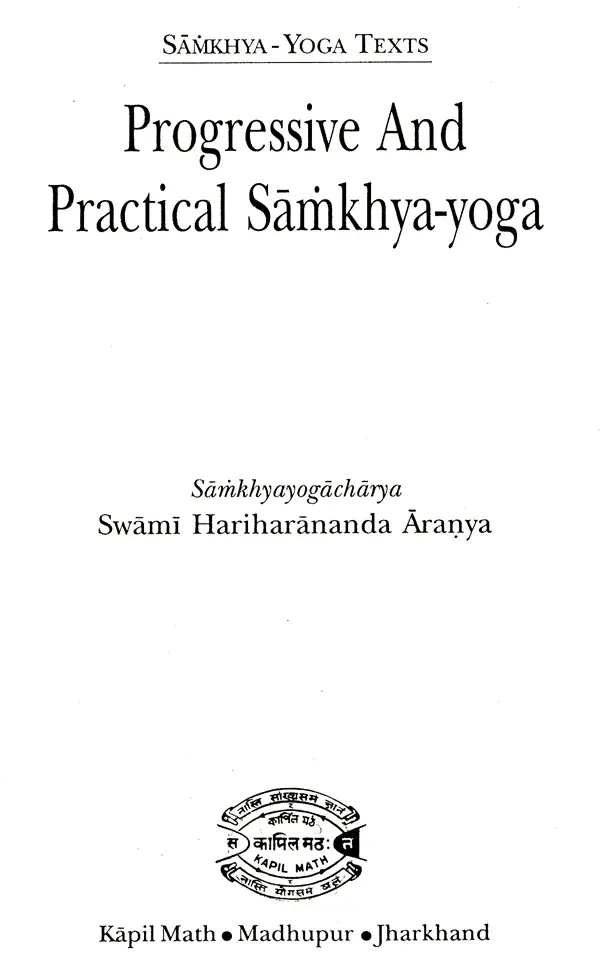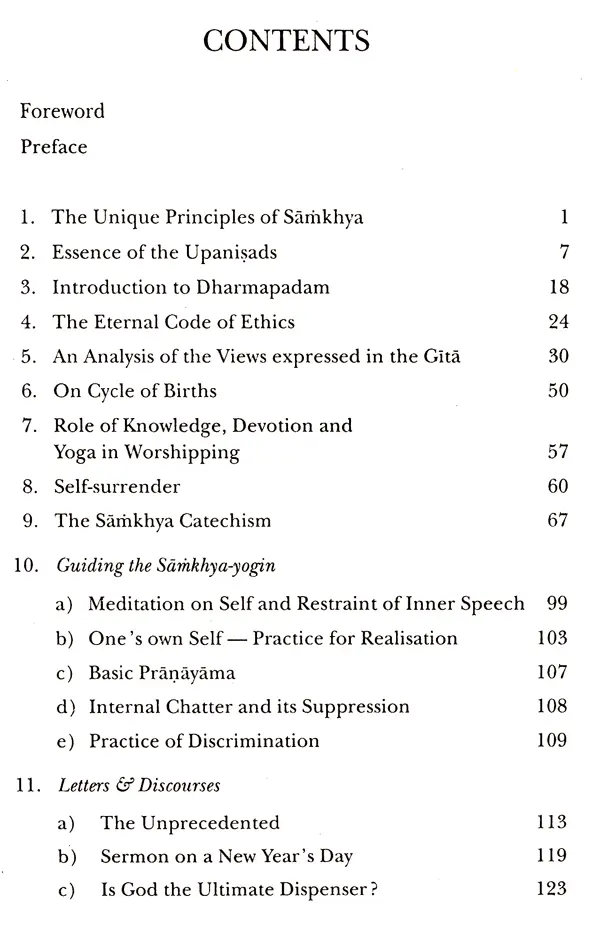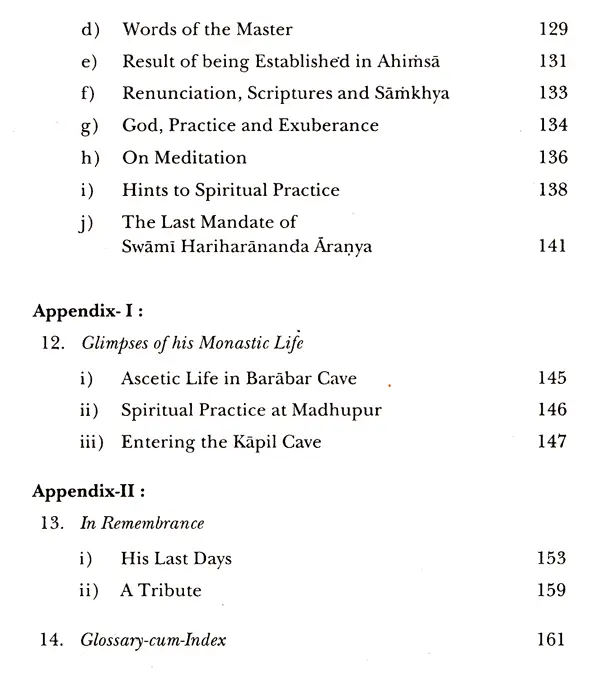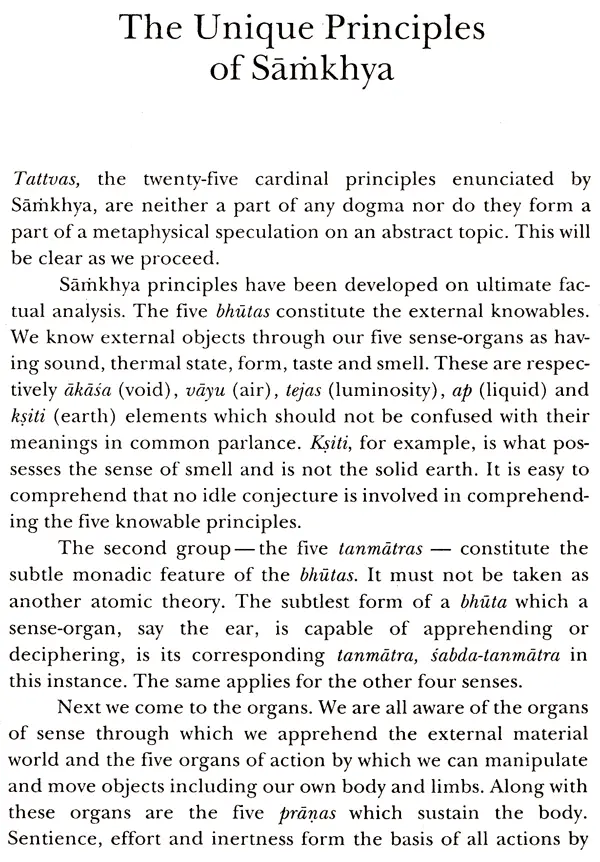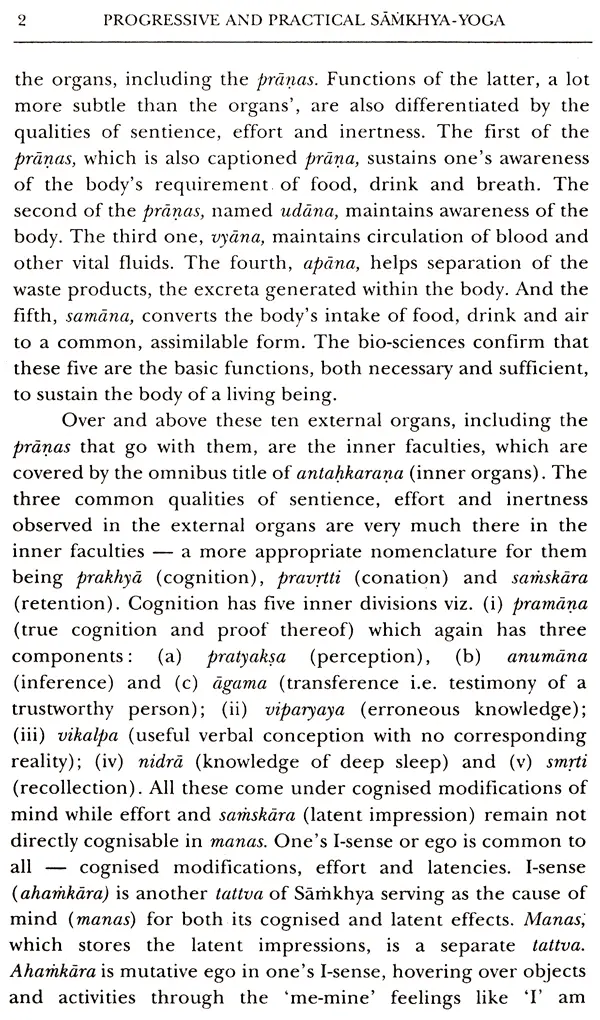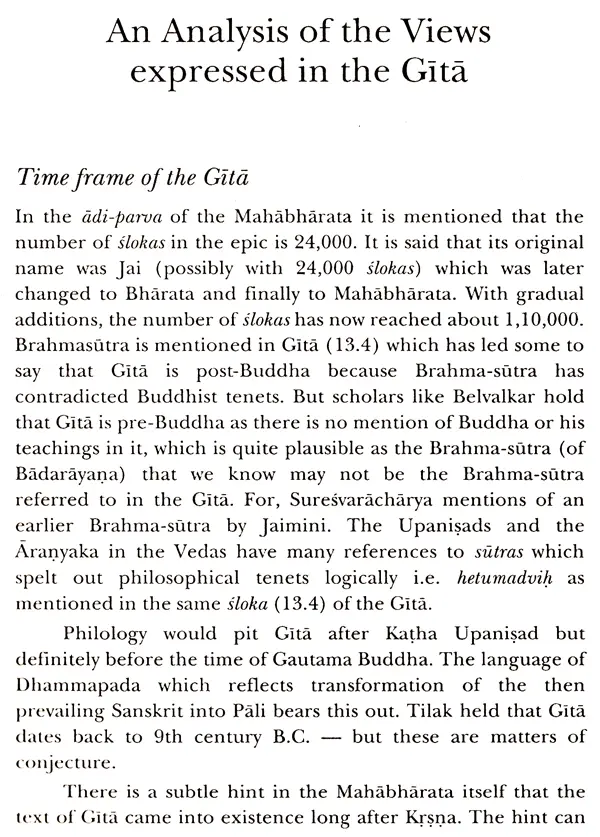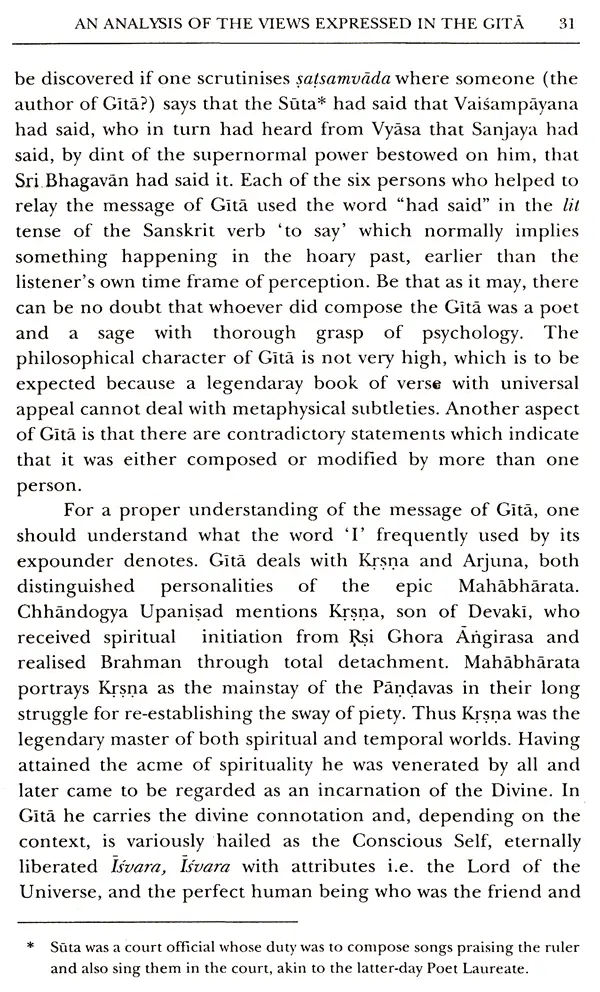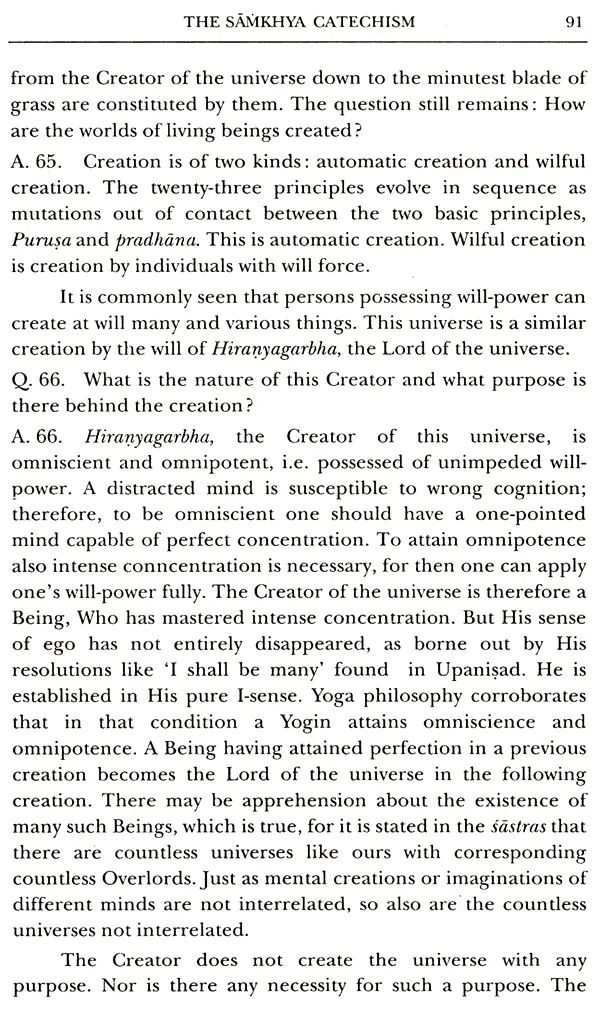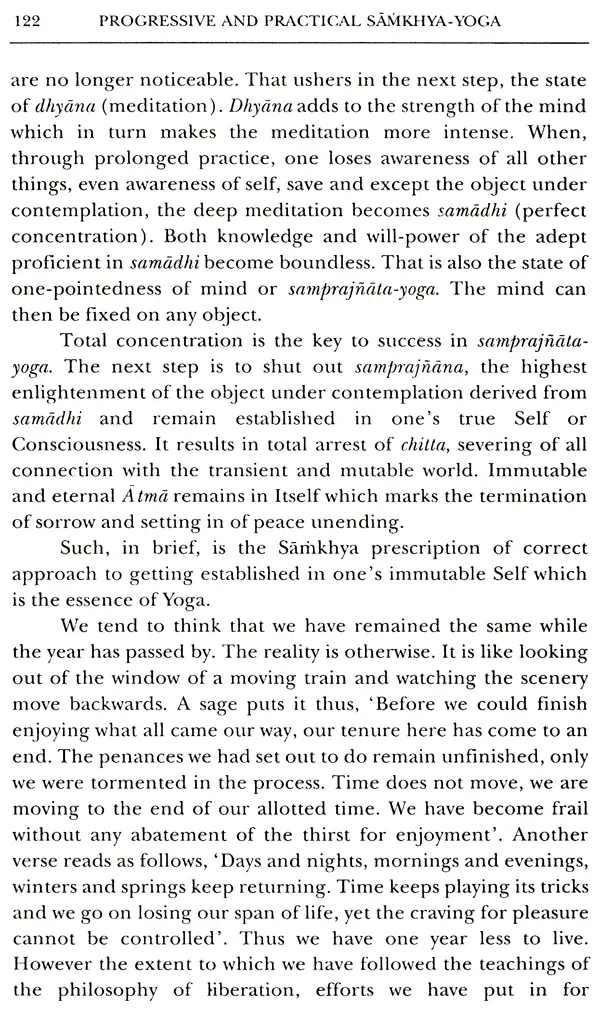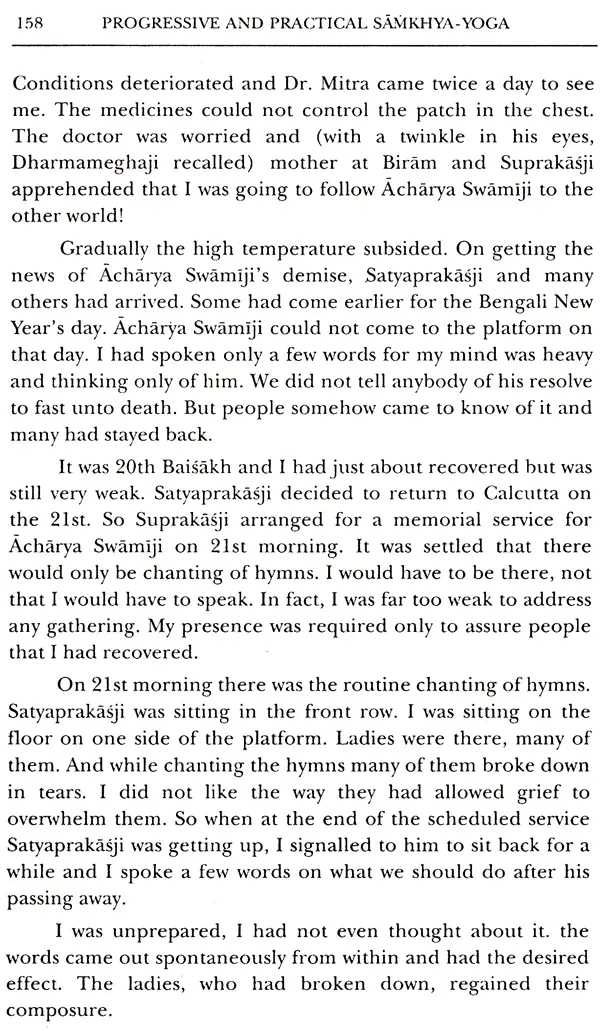
Progressive and Practical Samkhya Yoga (Samkhya Yoga Texts)
Book Specification
| Item Code: | UAH299 |
| Author: | Hariharananda Aranya |
| Publisher: | Kapil Math, Madhupur |
| Language: | English |
| Edition: | 2003 |
| ISBN: | 8187928115 |
| Pages: | 167 |
| Cover: | PAPERBACK |
| Other Details | 8.50 X 5.50 inch |
| Weight | 250 gm |
Book Description
This is the second book in the series of 'Samkhya-yoga Texts from Käpil Math. The first one, 'A Unique Travelogue'. an allegorical exploration of spirituality, was translation of one of the early works of the founder of Käpil Math, Samkhya yogacharya Swami Hariharananda Aranya.
His present book is different, comprising as it does an assorted collection of essays, letters and discourses by the revered Acharya Swamiji over a period of more than five decades of his monastic life. Most of these were in Bengali, some published posthumously. They cover a wide canvas - from the meaning of self-surrender to a unique interpretation of the message of the Gitä, from the nitty-gritty of breath control or prāṇāyāma as an accessory to Yoga to a vivid narrative of his own exalted spiritual experience, from the supernormal power gained from perfecting one's practice of non-violence to Samkhya-yoga in relation to the scriptures and prevailing practices of other denominations. In short, they deal with both theoretical and practical aspects of Samkhya-yoga, especially the points which seem to be difficult to the beginners.
The great Sri Kapila is acknowledged as the first person in this creation who succeeded in attaining the ultimate goal of spiritual quest viz. liberation from all sorrow for all time to Outcome. He also enlightened his disciple Asuri on how to advance in on the path and avoid pitfalls. Thus emerged Samkhya-yoga, the oldest yet the most logical philosophical system in the world, serving as a beacon to countless aspirants over centuries. Later, absence of Samkhya-yogins of stature of the early masters led to a period of decline.
**Contents and Sample Pages**
